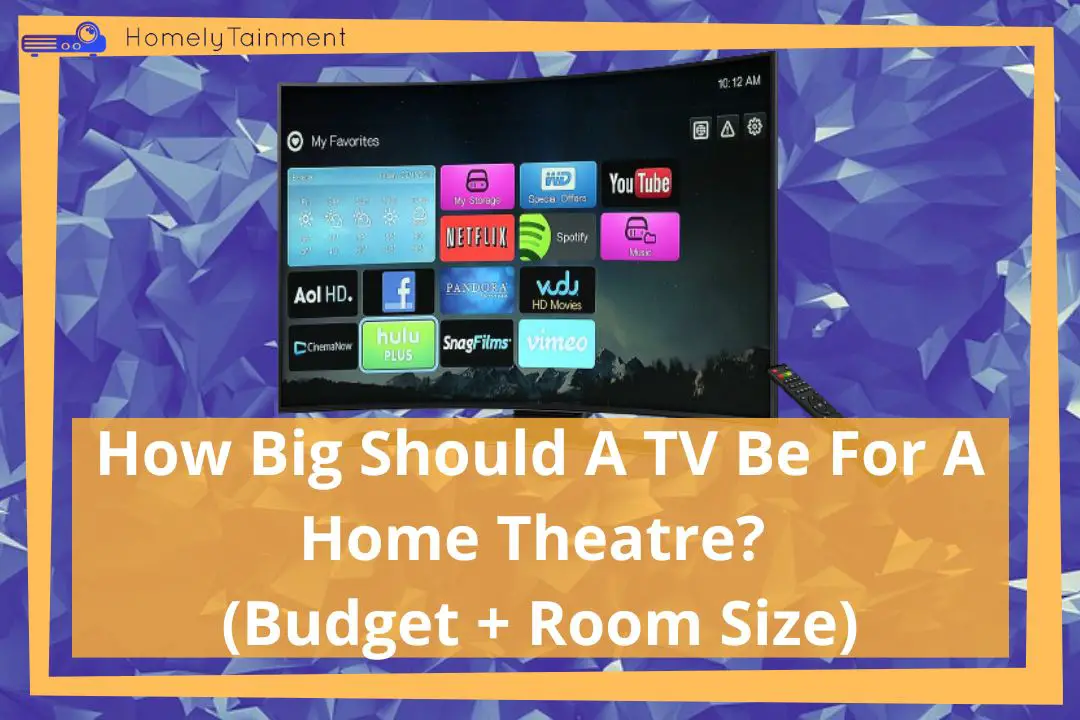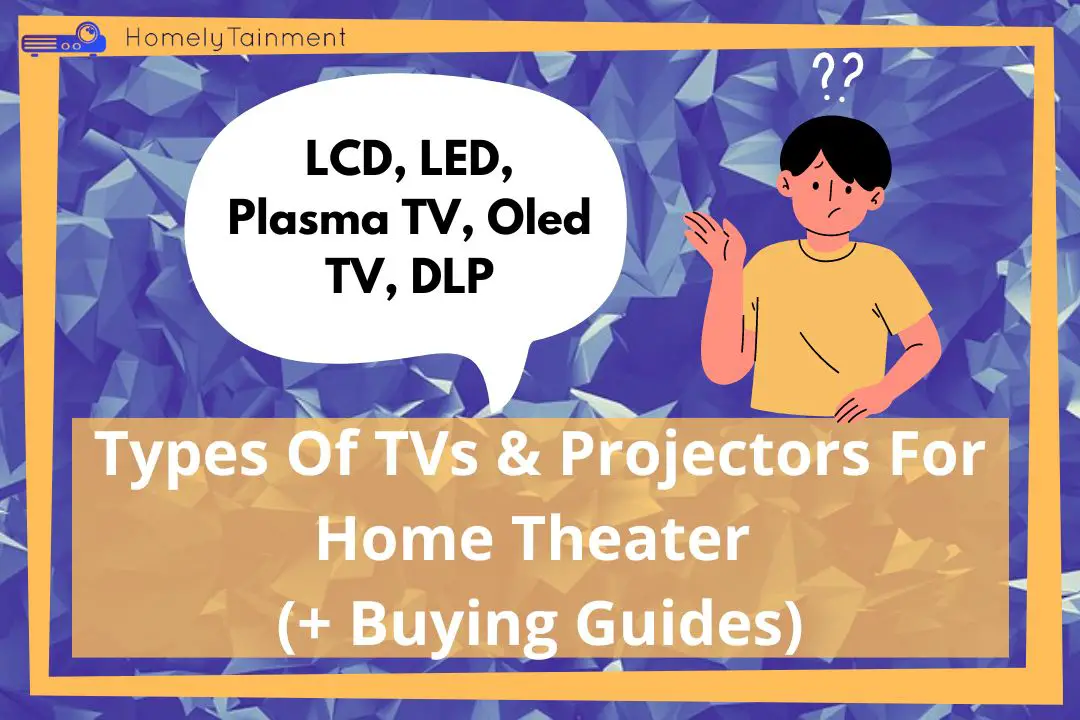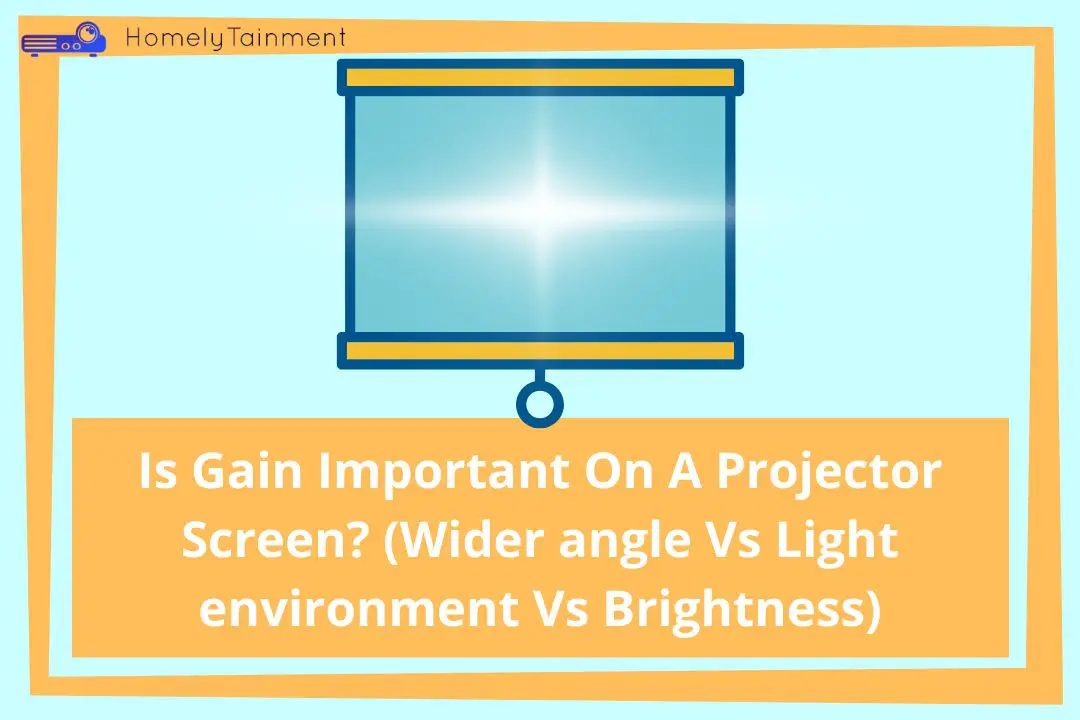
Homelytainment earn commissions (at no additional cost to you) if you purchase products from retailers after clicking on a link from our site.
The screen size and aspect ratio have confused many newbie home theater enthusiasts, yet they are very simple to master. Yes, there is technical knowledge required to have the best of both, but that is not difficult to understand. So, what is the best screen size & aspect ratio for home theater?
At A Glance: As a general rule of thumb, the best screen size is 120 inches because the majority of projectors will have a perfect contrast ratio and colors in this size and the best aspect ratio will be a variable one because it changes from type to type of content.
Keep reading as we will be discussing each one in detail. Stay for the final verdict as that is different, and you will know many more new things from it.
The reason that I infused both aspect ratio and screen size debate into one guide is that they go hand in hand with each other, like Romeo and Juliet. Lol! Just kidding, but mastering them is the key to the best theater experience.
Let’s discuss screen sizes
You can’t go directly with the biggest screen size because there are many more things to look into before choosing the screen size.
The first one is at which distance you will sit from it to have the best experience, or whether your room is capable of handling your demand for a bigger screen. Both critical questions will be answered by this guide. What is the best viewing distance for a home theater? I have included a simple table where you can see the distance for each size.
Let’s discuss this distance a little more before discussing the most common screen sizes because viewing distance is very important.
You need a different viewing distance for each type of resolution. If the same size of the screen is 1080p or 4K, then you will need a different viewing distance for each screen resolution.
Also, you will have to measure your theater room first, after that you can analyze how big the screen it can accommodate. I have included all these steps in the best viewing distance guide. You can get answers to all these questions by simply following that guide. I can’t repeat the same stuff here because then this guide will be hard to digest.
85-100 inches screen: What’s the gimmick?
The 85 inches is the most selected size of the display by those who want a TV-based home theater. And TV is the best for this size if you love high contrast ratio and can’t control the ambient light in your room.
But bigger than that, the most common one is 100 inches. You should not go for a 100 inches TV because that will be very expensive, and the projector is right here for you.
You can read my guide; TV vs Projector to know more about it. This will make the TV and projector debate for you easier.
Well, many projector lovers don’t settle for a 100 inches screen, and they want to go beyond that. Keep reading to know more about the common sizes above 100 inches.
120 inches screen: Common in Projectors
The 120 inches is the most common in the projectors. Those who want projector-based home theater love to have this size of screen in their theater room.
This is the best size because you will have a better contrast ratio in affordable projectors too.
These are the best and also the most affordable projectors. You can get a projector for under $500 that can give you better picture quality in 120 inches.
Read this review of the best projectors under $500. I have reviewed the top 7. A few projectors from this list will give you the best picture quality in 120 inches image size.
Stay for the final verdict to pick the winner.
150 inches screen: Common for expensive projectors
This screen size is good when you are buying expensive projectors. The expensive projectors can give you a better image contrast ratio and color separation.
These projectors are built to have the best picture quality in bigger image sizes. That’s why this size comes with spending more dollars.
Not only more dollars, but also a lot more research is required. Because you have to look into more features of the projectors and also with more care.
Because not every expensive projector will have the best picture quality. It depends on its build quality more than the price range.
Read this review of the best short throw projectors. I have reviewed the top 5. A few projectors in this list can give you the best picture quality in this 150 inches image size.
Which is the best screen size for you?
The best of the best is 120 inches. You can have the best contrast of colors and uniformity in the colors. The colors will look the same in all areas of the screen. The image will have balanced color and white lumens that will give a nice immersive touch to your favorite content. It will provide all this awesomeness on a budget.
The 150 inches is the best for those who can flex the muscles of their budget. And the 85 inches is the best for those who want a TV in their theater room.
I personally love the 120 inches screen because it can give better image quality both on a low and high budget. So, this is the winner for me.
Let’s discuss the aspect ratio
No matter what size of screen you are looking for, the aspect ratio will decide the theater experience for you.
Engineers have put so much work into making this aspect ratio flexible. That’s why they have invented a few ways that can make it flexible in cheap or with extra dollars.
We will discuss those ways after discussing the most common aspect ratios. Because after that you will know how good the inventions are and which one is worth it for you.
16:9 aspect ratio: Best for TV watching and Sports
This ratio is most common in Television broadcasts and cable watching. Also, it is the best fit for sports watching.
If you are a person that will use their theater more for this type of content, then you should go for this aspect ratio.
But choosing an aspect ratio is like installing a certain size of screen permanently. This means it won’t provide flexibility in going from one aspect ratio to another.
But don’t worry because now there are a few ways that can make it flexible.
Right now, keep in mind that 16:9 is the best aspect ratio if you are using theater for television watching.
We will discuss the flexibility possibility at the end of this section.
Perfect the video and audio experience of home theater. By following my favorite 13 easy tips.
2.4:1 aspect ratio: Best for movies and TV series
This is the best for those who want to watch movies and TV series in their theater room.
The majority of movies and TV series are produced in this aspect ratio. But there are a few movies and TV series that are produced in many more ratios.
These ratios are not so different from each other like the 16:4 and 2.4:1 are.
Content from the other aspect ratios can look fine on 2.4:1. There will be thin black bars at the top and bottom of the movie’s image. We can manage the size of these bars. But if you don’t want them at all, then there are ways to eliminate them too.
I am explaining those ways now. You might be thinking what Daniel is doing, just teasing us.
Which is the best aspect ratio for you?
The best aspect ratio is the variable or flexible one.
The flexibility also comes in cheap and can be a little expensive.
The cheapest one is this one. You can adjust the 16:9 image on any screen size and then save that aspect ratio in the projector memory. Many projectors provide this feature. After this, adjust the 2.4:1 aspect ratio content on the same screen with the help of projector lens zoom. Now, the black bars will go out of the screen and will have only a picture on the entire surface of the screen.
Now, save this aspect ratio too in the projector memory. Now, When you are playing this aspect ratio content, then you can switch to the respective ratio with a push of a button.
But this comes with limitations. Because by pushing the black bars out of the screen area. You are losing the screen area to fill it with color pixels. If you fill those black bars with pixels, you will have an image that will have the best details of colors.
Cost a Little more: There is a company called Panamorph that works with many projectors brands. They have developed a technology that can adjust different aspect ratio images on the screen without those annoying black bars or blank areas of the screen. You can see on their homepage which projector models they support.
Cost Even more: There are specialized screens that can adjust themselves for each aspect ratio with a push of a button. You can get this type of screen from professional home theater companies.
The result of the final verdict is that the best aspect ratio is the flexible one.
Final verdict: Choose what size & ratio combination for a better experience.
The best screen size will be 120 inches and the best aspect ratio which is flexible. The one that can be adjusted according to the nature of the content.
Did you get something out of this screen size guide? Hold On We Have Something Exciting To Share.
[the_ad id=”4771″]FAQs
How big should my projection screen be?
If the projector is under $500 then the best screen size will be from 100-120 inches but if the projector is under $5000 then the best screen size will be 120-150 inches.
Along with the price, you must have a projector from a reputable brand and have the best build quality.
How big should a TV be for a Home Theater?
The TV should not be bigger than 85 inches because above 85 inches the TVs get more expensive. But if you are ok with it, then you can buy above 85 inches.
The 85 inches is the sweet spot for TV-based displays.
Helpful Resources For The FAQs To Read More
- This was my opinion, read more about it from Benq’s blog. (Resource for the first answer)
- This is my opinion, read more about it from Digitaltrends. (Resource for the second answer)




